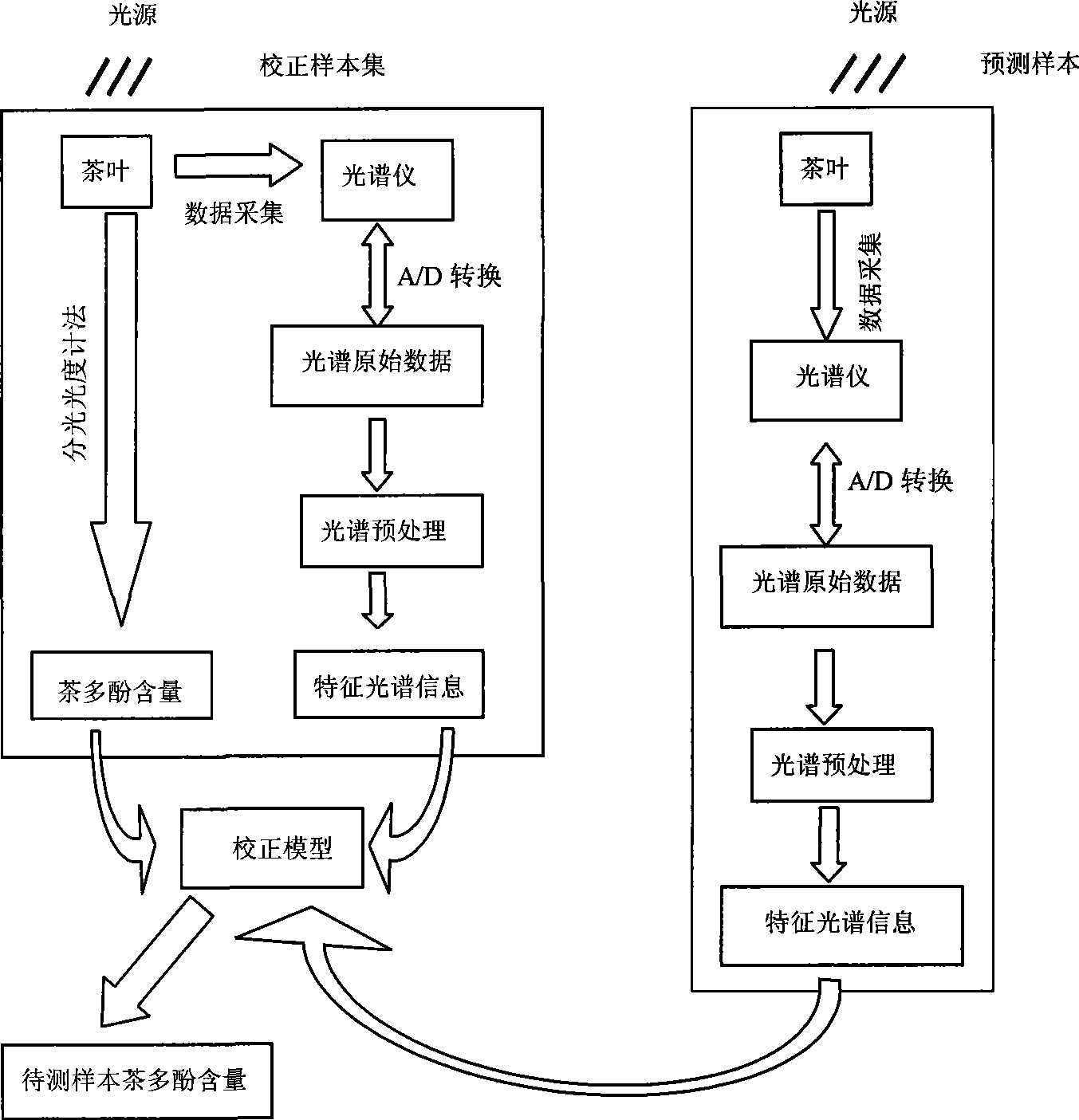Method for non-destructive measurement for tea polyphenol content of tea based on near infrared spectrum technology
A technology of near-infrared spectroscopy and tea polyphenols, which is applied in the field of optical analysis of materials, can solve problems such as time-consuming, complicated measurement process, and the need for chemical reagents, and achieve the effects of reducing detection costs, speeding up analysis, and not polluting the environment
- Summary
- Abstract
- Description
- Claims
- Application Information
AI Technical Summary
Problems solved by technology
Method used
Image
Examples
Embodiment Construction
[0018] The acquisition device consists of a near-infrared spectrometer, a halogen lamp supporting the spectrometer, a computer, a standard calibration plate, a sample pool, and a power supply. The wavelength of the spectrometer is 325-2500nm. The spectrometer is connected to the PC computer with a data line, and the sample is placed in a special glass sample container. The angle between the spectrometer probe and the center of the sample container is 45 degrees. After the spectral data collection is completed, the data processing and analysis are carried out with the special spectral analysis software ASD ViewSpec ProV2.14 and Unscramble V9.2.
[0019] Whole implementation process of the present invention is as shown in accompanying drawing:
[0020] ① Establishment of calibration sample set spectra. First, collect tea samples of different varieties, different production processes, and different harvest periods (spring tea, summer tea, autumn tea) to establish a calibration...
PUM
 Login to View More
Login to View More Abstract
Description
Claims
Application Information
 Login to View More
Login to View More - R&D
- Intellectual Property
- Life Sciences
- Materials
- Tech Scout
- Unparalleled Data Quality
- Higher Quality Content
- 60% Fewer Hallucinations
Browse by: Latest US Patents, China's latest patents, Technical Efficacy Thesaurus, Application Domain, Technology Topic, Popular Technical Reports.
© 2025 PatSnap. All rights reserved.Legal|Privacy policy|Modern Slavery Act Transparency Statement|Sitemap|About US| Contact US: help@patsnap.com

